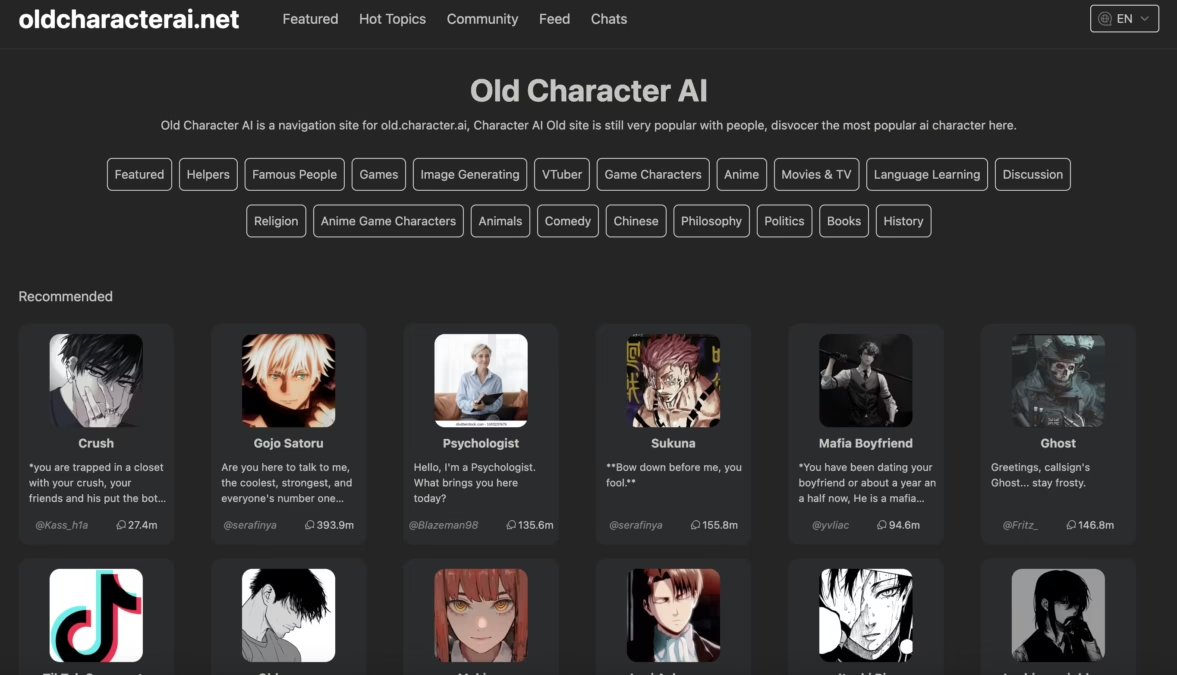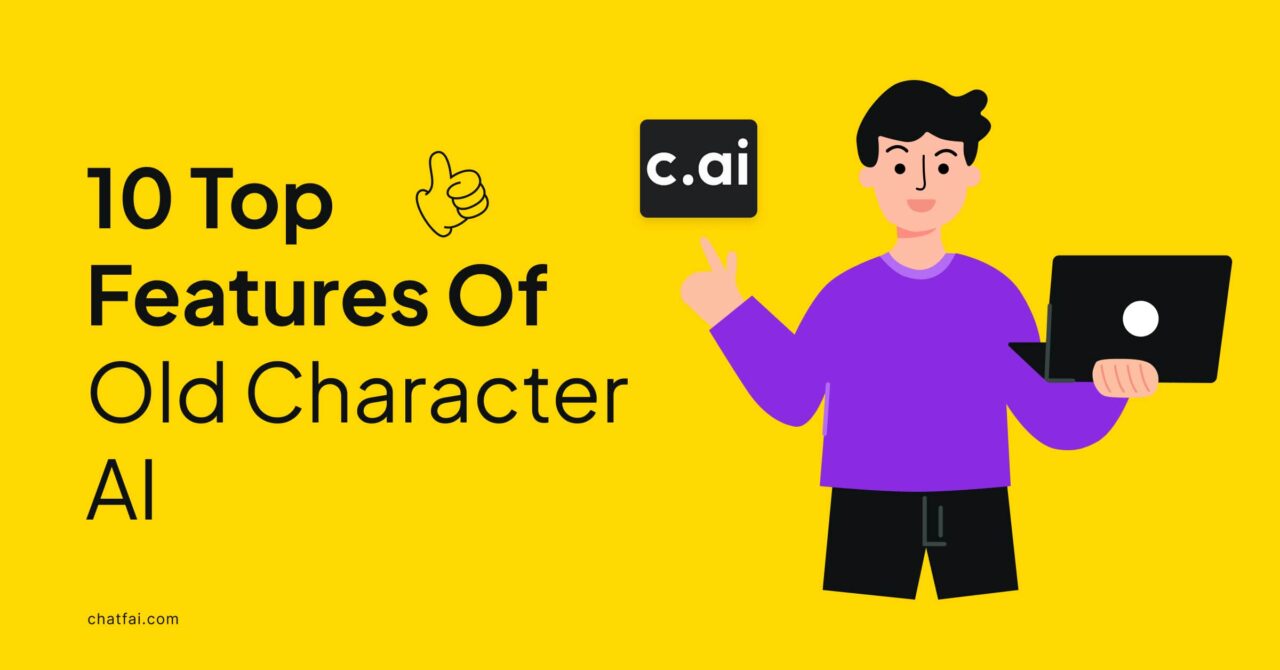The world of artificial intelligence (AI) has advanced significantly in recent years. Among the many innovations that have revolutionized human-computer interaction, Character AI Old stands out as a notable achievement. Designed to simulate conversation with fictional characters, celebrities, or even AI personas, Character AI blends technology with creativity in a unique and engaging way.
But what was Character AI like before it became the sophisticated tool we know today? Let’s take a deep dive into the old versions of Character AI, exploring the evolution, features, user experiences, and how these early iterations laid the foundation for today’s intelligent chatbot systems.
What is Character AI?
Character AI is an AI-powered chatbot platform that uses advanced natural language processing (NLP) and machine learning to create digital “characters” for users to interact with. Users can create or interact with various personalities ranging from fictional characters in literature and games to real-life celebrities and custom-made personas.
Character AI was developed by former Google AI engineers who aimed to create an AI that doesn’t just answer questions like traditional chatbots but actually thinks and responds in character.
The Early Days: Character AI Old Versions
While today’s Character AI can generate near-human conversations with great context retention and personality emulation, its older versions were far simpler. Let’s revisit the key phases in the development of Character AI and see what features defined each stage.
1. Character AI Alpha – Limited Prototype
The alpha stage of Character AI, which was developed behind closed doors, focused on basic interaction and identity simulation.
Features:
- Very basic language model (prior to GPT-3 era)
- Limited vocabulary and syntax
- Strict scripted behavior of the AI characters
- Minimal personality retention
At this point, users were mostly internal testers. The model didn’t have access to broader context or memory. Conversations were generic and often drifted off-topic quickly.
User Experience:
Users could tell that the chatbot was AI. It lacked emotional depth, often repeating phrases and offering unnatural responses. However, for early adopters of the AI field, even this level of communication was exciting.
2. Character AI Beta (2021–2022) – Public Debut Era
In 2021–2022, Character AI opened its doors to public beta testing. This was a pivotal point in its evolution.
Features:
- Initial integration with advanced transformer models (like early GPT versions)
- Users could now create custom characters with detailed personality traits
- UI improved with input options for behavior, tone, and backstory
- Dialogues became more fluid and lifelike
Classic Limitations in Old Versions:
- No long-term memory
- Frequent derailing from character context
- Occasional inappropriate or nonsensical responses
- Slow response times due to backend limitations
Despite these issues, people loved using Character AI in its older versions for its imaginative potential. The idea of talking to anime characters, novel protagonists, or historical figures drew millions to the platform.
3. Character AI Pre-Launch (Late 2022–Early 2023)
This pre-launch phase built upon the beta version and introduced several vital elements.
Notable Improvements:
- Enhanced training datasets
- Emotion simulation became more realistic
- Better adherence to personality traits
- Community sharing and discovery of custom characters
- Safeguards to reduce NSFW content
The platform also started separating itself from other AI models like ChatGPT by focusing purely on role-played conversations. Users could experience engaging, story-driven dialogues instead of just getting answers.
User Feedback:
The community feedback was crucial in shaping the final public release. Some users preferred the old version of Character AI because:
- It was less restricted (fewer content filters)
- Responses felt more “creative” or “free-form”
- Slower updates meant fewer bugs or crashes mid-session
Key Differences Between Old and New Character AI

| Features | Old Version | Current Version |
|---|---|---|
| Language Model | Basic NLP / Early Transformers | Advanced LLMs (GPT-4 scale) |
| UI/UX | Minimalist, clunky | Modern, responsive |
| Memory & Context | No long-term memory | Limited short-term memory |
| Customization | Basic character creation | Deep character design with image uploads |
| Content Filters | Minimal filters, possible harmful output | Strict moderation and compliance |
| Speed | Variable / slow | Optimized server response times |
Many users online still search for “Character AI old version download” or wish to return to the less censored versions. However, older versions are no longer available publicly due to privacy issues, data limits, and content moderation concerns.
Why Users Miss the Old Character AI
While modern Character AI has undeniably improved in performance, several long-time users have aired nostalgia for the old Character AI versions on platforms like Reddit and Discord.
Reasons include:
- Less content filtering: Conversations were more open-ended.
- More experimental: Developers allowed more user control back then.
- Raw creativity: AI responses were more eclectic—less polished but more unexpected.
It’s similar to how people reminisce about early versions of YouTube or Facebook—less corporate, more community-driven.
A Timeline of Character AI Evolution
| Year | Version | Milestone |
|---|---|---|
| Pre-2021 | Internal Alpha | Early prototype testing |
| 2021 | Public Beta | First release with basic personalities |
| 2022 | Model Improvements | Hosted millions of conversations per day |
| 2023 | Enhanced UI, Filters | Added AI image generation, NSFW filters, user customization |
| 2024 | Pro Subscriptions | Introduced premium features and user memory integration |
The Role of User Feedback in Evolving Character AI
One of the major strengths of Character AI has been the responsive development team. They actively listened to feedback on older versions and made the following improvements:
- Introduced Character Memory to remember past interactions (in Pro version)
- Allowed multi-character chats
- Reduced downtime and increased response accuracy
- Balanced creativity with safety filters
So while the platform has moved away from the raw freedom of early versions, it now offers a more stable, supportive, and scalable environment for millions.
How to Recreate the Old Character AI Experience
Although you can’t download or directly access early versions of Character.AI today, you can get a similar feel using:
- Open-source models like Pygmalion, KoboldAI, or Janitor AI
- Offline chatbot software with personality presets
- Roleplay AI communities on Reddit, AI Dungeon, and NovelAI
These tools allow more freedom and fewer restrictions, echoing the “wild west” nature of Character AI’s early development.
Final Thoughts: From Simplicity to Sophistication
The old versions of Character AI provided the scaffolding for what is now one of the most beloved AI chatbot platforms worldwide. What once were glitchy, buggy, and unpredictable conversations are now immersive, highly intelligent character interactions.
But for those who used it early on, those first conversations—however flawed—had raw magic. And that nostalgia remains strong in today’s ever-evolving AI landscape.
So whether you’re a new user or an old fan, remember: every great AI started somewhere. And the old Character AI, in all its imperfections, was just the beginning.



